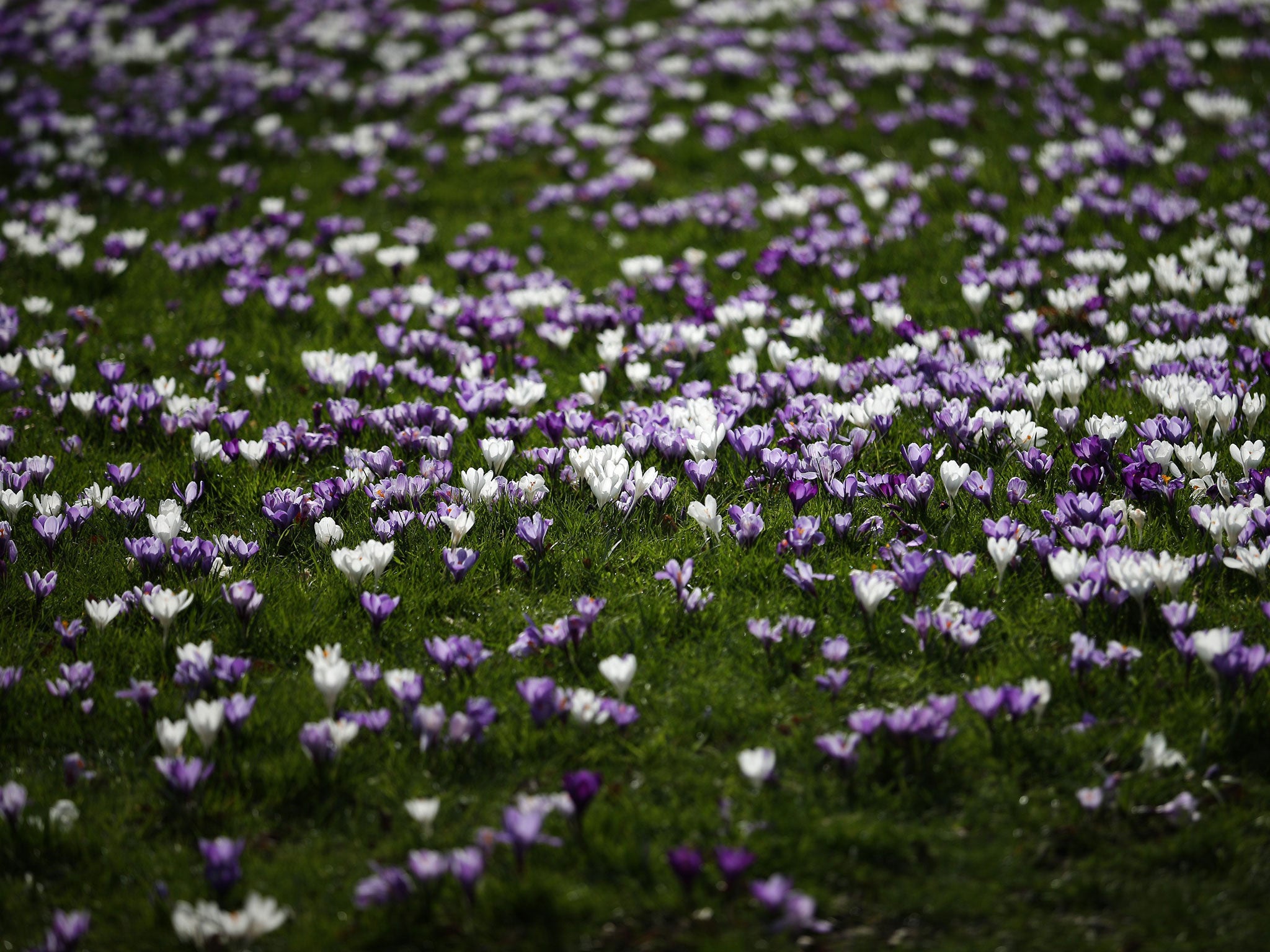From carpets of crocuses to cuckoos on the move, spring is truly springing

Your support helps us to tell the story
From reproductive rights to climate change to Big Tech, The Independent is on the ground when the story is developing. Whether it's investigating the financials of Elon Musk's pro-Trump PAC or producing our latest documentary, 'The A Word', which shines a light on the American women fighting for reproductive rights, we know how important it is to parse out the facts from the messaging.
At such a critical moment in US history, we need reporters on the ground. Your donation allows us to keep sending journalists to speak to both sides of the story.
The Independent is trusted by Americans across the entire political spectrum. And unlike many other quality news outlets, we choose not to lock Americans out of our reporting and analysis with paywalls. We believe quality journalism should be available to everyone, paid for by those who can afford it.
Your support makes all the difference.Well it’s been a long wait, but spring is here now, at least by the Met Office definition, which classifies the new season as consisting of March, April and May (the older, astronomical definition has it beginning from the vernal equinox, which this year is 20 March, but we tend to go with the Met Office these days). And with Sunday being the first day of it, I went out to look for signs, and was not disappointed.
In Kew Gardens at the moment you can see what must be one of the most vivid springtime displays in the whole country: millions of blooms of early crocuses which are forming vast mauve sheets over the ground. The flower is Crocus tomasinianus, originally from eastern Europe, and in English sometimes called Whitewell purple. From a distance, the massed ranks of the blooms seem to glow, to shine like pale-purple light in the grass. It’s an astonishing spectacle.
The rest of Kew is still a bit bare, but the snowdrops are proudly out in the bluebell wood and there are subtler signs of the new season: the black-headed gulls on the lake are resplendent in their shiny new chocolate-brown headgear (which in winter shrinks to just a dark dot behind the eye), and the dunnocks, those nondescript but subtly attractive birds which we used to call hedge sparrows, are everywhere reeling out their song, which some people say is like the sound of a squeaking shopping trolley: streedly-streedly-streedly-stree.
Yet the most interesting sign of spring greeted me when I got back and switched on the computer: it was an email from the British Trust for Ornithology (BTO) giving the latest details of the BTO cuckoos in Africa. Since 2011, Britain’s leading bird research organisation has been satellite-tracking cuckoos on their mammoth migratory journeys from Britain to their African wintering grounds, and the project has revealed a wonderful wealth of hitherto unknown information: where wintering British cuckoos end up (the Congo rainforest), how they get there (some via Italy, some via Spain) and how they return (all of them via West Africa).
The journeys are arduous and full of risk, and sometimes the birds don’t make it: Indy, the cuckoo sponsored by The Independent, died in Cameroon in 2012. Currently 13 cuckoos are being tracked in Africa, including Chris (named after the naturalist Chris Packham) who has been going strong since 2011, and is thus being tracked on his fourth successive Africa trip; and what the BTO email told me was the heartening news that all of the birds are now on their way back, and heading northwards. There’s our spring down in Africa, flying steadily towards us.
They’ll be here in about six weeks, and when they arrive, their two-note musical call is the most instantly recognisable of all our springtime sounds. But the cuckoo, of course, has a double identity: it is not just the supreme spring-announcer, it is a notorious cheat, laying its eggs in the nests of other birds, (the technical term is a brood parasite).
Have you ever wondered how it does it? I mean, how it manages to get its single egg into the nests of its host species, such as reed warblers, meadow pipits and pied wagtails, where the cuckoo chick throws out the other eggs or nestlings and ends up as a monstrous intruder many times the size of the hapless foster-parents who are straining to feed it?
A new book tells in mesmerising detail how the host birds are first outwitted by the female cuckoo, and then by the cuckoo chick. Cuckoo – Cheating By Nature (Bloomsbury, £16.99) is by Nick Davies, the world expert on Cuculus canorus, the Eurasian cuckoo, our bird. He gives a riveting account not only of how the cuckoo evolves deceptive stratagems, such as eggs which mimic the eggs of the host, but also of how the host birds evolve defences, such as learning to reject any eggs which seems slightly different from their own.
This is in effect an “evolutionary arms race” and its complexities are elucidated with exemplary clarity and humour by Professor Davies, who is Professor of Behavioural Ecology at Cambridge and has spent the past 30 years studying cuckoos and discovering their tricks, at Wicken Fen to the north of the city. (He also, for good measure, discovered, through studies in the Cambridge Botanical Garden, that the humble and unglamorous dunnock, mentioned above, has the raciest sex life of any small songbird, everywhere looking for lurve).
His new cuckoo study, which is published next week, is an even more fascinating take on curious behaviour. I’ve just read it, and it’s a terrific read.
Join our commenting forum
Join thought-provoking conversations, follow other Independent readers and see their replies
Comments